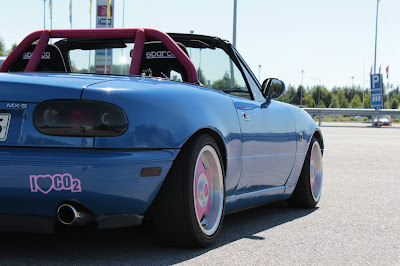It is
amazing to watch old track videos and realize that nothing major has happened.
Especially when bunch of eager amateur weekend racers want to show their best,
someone should definitely hit a barrier or some other obstacle. Well ok, sometimes
that did happen but luckily no one got seriously hurt!
I have selected here a couple of videos from the past seasons for you to
watch. Back in 2008 youtube had only limited capacity for video uploads and
that shows. I filmed the earlier videos with a Panasonic compact camera. It
recorded quite decent 480p video, but it had to be heavily packed to make it
fit youtube’s limitations.
Hope you
enjoy!
This was
filmed during Radalle.com track day in 2008. These events are open to everyone
and usually very crowded. Lover than average video quality, noisy audio but
lots of overtaking with 132 hp Miata!
Best parts
in first 5 minutes.
- Mitsubishi
EVO, Mk1 Supra, Opel Omega, RX-7, Porsche 944
Screaming 8000+ rpm single lap from 2010! Revlimiter was set to 8500 rpm
since engine was still making good power up there and I got away with fewer
gear changes. Very nice engine tone from open cone filter and aluminum intake
plumbing, average 480p video quality and some tire squeal.
Open racing practice in 2012. This was my first video with multiple
angles. Nothing really special happens here, some corner exit power slides, one
mild-ish throttle tap drift at 3:32 and two race cars. Put HD720 on!
- Legends
race car, Citroen DS3 R3 rally car
Miata Club of Finland’s track day at Alastaro in 2013. A fellow member
wanted some footage of his driving, so I tried to keep up with him. 100hp/Nm
extra makes a difference! This was also a test for a chin mounted Hero2-camera.
Put HD on!
Radalle.com track day at Motorpark in 2013. This stint turned out to be
a true -90’s battle! At 1:20 I let a
Ferrari 348 TS pass me and then followed it. Eventually we caught a Honda Civic
VTi with slightly tuned B18 that was competing in Time Attack Club –class. We
passed it and after that also E34 5-series drift car. Audio quality is not
good. Hero2’s internal microphone is poor and open top makes quite lot
turbulence. Something to be dealt with…


















